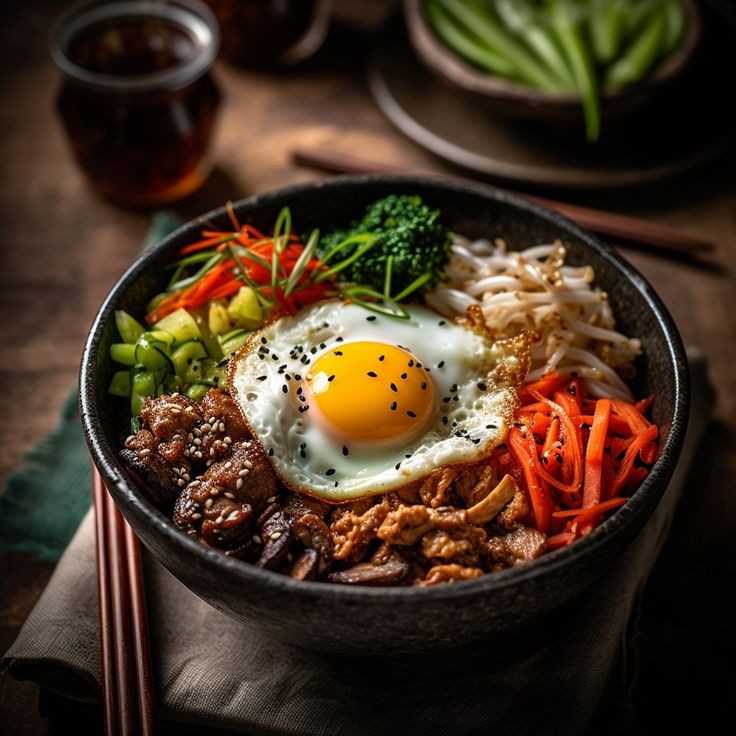
Korean Bibimbap: The Colorful Bowl of Tradition and Flavor
LoveFoodReadyMeals – Korean cuisine is famous for its bold flavors, balanced nutrition, and stunning presentation. Among its many iconic dishes, bibimbap stands out as a cultural symbol. Translating to “mixed rice,” bibimbap represents more than food—it reflects Korea’s philosophy, history, and artistry.
A Dish Rooted in Tradition
Bibimbap’s history stretches back centuries. Some trace it to royal court meals, while others connect it to rituals where families combined foods as a sign of unity and respect. Another theory says people originally created bibimbap by mixing leftover side dishes with rice.
Regardless of its exact origin, bibimbap became a dish tied deeply to Korean identity. Today, people enjoy it everywhere—from street stalls to luxury restaurants—each bowl carrying tradition and harmony.
The Art of Color and Balance
Bibimbap’s immediately grabs attention with its vibrant colors. Seasoned vegetables like spinach, carrots, zucchini, bean sprouts, and mushrooms surround the rice. Proteins such as beef, chicken, tofu, or a fried egg add heartiness, while a spoonful of gochujang (spicy-sweet chili paste) delivers the signature kick.
The design goes beyond beauty. It follows obangsaek, the five cardinal colors (white, black, red, yellow, green), each symbolizing elements, directions, and health benefits. Bibimbap therefore serves as both a balanced meal and a visual expression of Korean philosophy.
“Read More : Why Japanese Sushi Is More Than Just Food — It’s Culture”
A Flavor Symphony in Every Bite
Although the bowl begins as a neat arrangement, the real experience starts once you mix it. Rice, vegetables, protein, sesame oil, and gochujang combine into a flavor symphony—spicy, savory, nutty, and slightly sweet.
This act of mixing mirrors a deeper idea: harmony. Just as diverse ingredients unite into balance, bibimbap represents bringing people and traditions together.
Variations Across Korea
Different regions in Korea offer unique styles of bibimbap:
- Jeonju Bibimbap is famous for its generous toppings and strong sesame oil flavor.
- Dolsot Bibimbap comes in a sizzling stone bowl that crisps the rice for extra texture.
- Coastal regions often add seafood, while mountain areas highlight wild greens and herbs.
These variations show how bibimbap adapts to local culture and ingredients while keeping its core identity.
A Global Favorite
In recent years, bibimbap has gained worldwide fame. People love it for its versatility—it suits both meat eaters and vegetarians—while fitting modern trends for healthy, balanced meals.
Nutritious, low in fat, and easy to customize, bibimbap attracts health-conscious diners who also want authentic Korean flavors.
“Read More : Death Toll from 6.9 Magnitude Earthquake in the Philippines Rises to 19”
More Than Just a Meal
Bibimbap goes beyond being a dish—it offers an experience. From its ancient roots to its modern global popularity, it carries values of unity, balance, and respect for nature’s gifts.
Each bowl reminds us that food can nourish the body and the soul. When you sit down to bibimbap, you’re not just eating rice and vegetables—you’re tasting centuries of culture, tradition, and harmony.